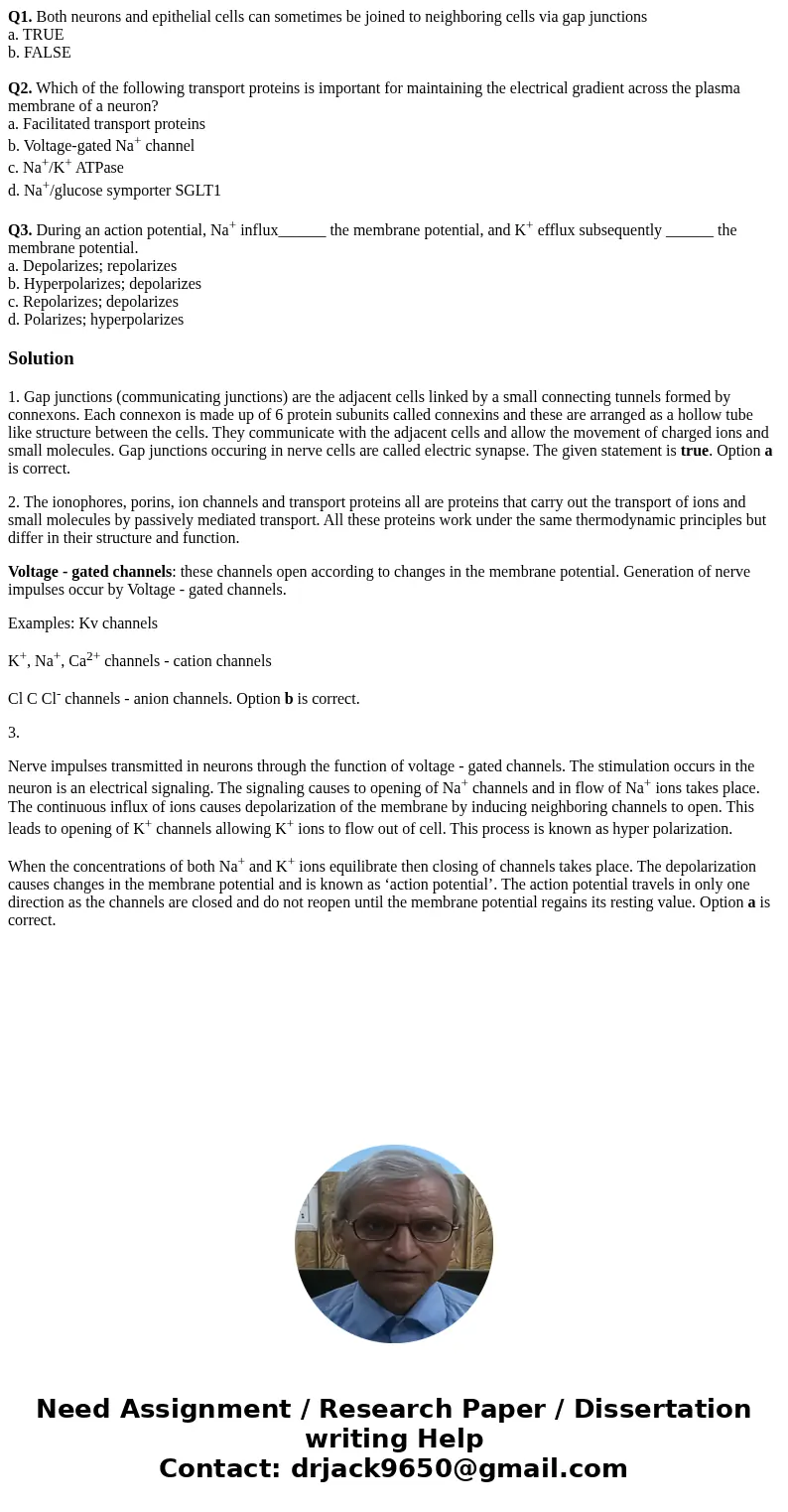Q1 Both neurons and epithelial cells can sometimes be joined
Q1. Both neurons and epithelial cells can sometimes be joined to neighboring cells via gap junctions
a. TRUE
b. FALSE
Q2. Which of the following transport proteins is important for maintaining the electrical gradient across the plasma membrane of a neuron?
a. Facilitated transport proteins
b. Voltage-gated Na+ channel
c. Na+/K+ ATPase
d. Na+/glucose symporter SGLT1
Q3. During an action potential, Na+ influx______ the membrane potential, and K+ efflux subsequently ______ the membrane potential.
a. Depolarizes; repolarizes
b. Hyperpolarizes; depolarizes
c. Repolarizes; depolarizes
d. Polarizes; hyperpolarizes
Solution
1. Gap junctions (communicating junctions) are the adjacent cells linked by a small connecting tunnels formed by connexons. Each connexon is made up of 6 protein subunits called connexins and these are arranged as a hollow tube like structure between the cells. They communicate with the adjacent cells and allow the movement of charged ions and small molecules. Gap junctions occuring in nerve cells are called electric synapse. The given statement is true. Option a is correct.
2. The ionophores, porins, ion channels and transport proteins all are proteins that carry out the transport of ions and small molecules by passively mediated transport. All these proteins work under the same thermodynamic principles but differ in their structure and function.
Voltage - gated channels: these channels open according to changes in the membrane potential. Generation of nerve impulses occur by Voltage - gated channels.
Examples: Kv channels
K+, Na+, Ca2+ channels - cation channels
Cl C Cl- channels - anion channels. Option b is correct.
3.
Nerve impulses transmitted in neurons through the function of voltage - gated channels. The stimulation occurs in the neuron is an electrical signaling. The signaling causes to opening of Na+ channels and in flow of Na+ ions takes place. The continuous influx of ions causes depolarization of the membrane by inducing neighboring channels to open. This leads to opening of K+ channels allowing K+ ions to flow out of cell. This process is known as hyper polarization.
When the concentrations of both Na+ and K+ ions equilibrate then closing of channels takes place. The depolarization causes changes in the membrane potential and is known as ‘action potential’. The action potential travels in only one direction as the channels are closed and do not reopen until the membrane potential regains its resting value. Option a is correct.

 Homework Sourse
Homework Sourse